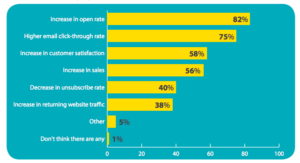Voicemail drops have become a highly effective marketing tool for businesses looking to reach customers without the need for live conversations. When executed correctly, a well-crafted voicemail drop script can engage customers, reinforce brand loyalty, and boost response rates. However, designing a script that resonates requires a strategic approach that prioritizes clarity, conciseness, and emotional intelligence. We explore how to craft a voicemail drop script that maximizes engagement and drives customer action.
Understand Your Audience: The Key to Personalised Messaging
Before you begin writing your voicemail drop script, it’s essential to understand your target audience. The more you know about your customers’ needs, preferences, and pain points, the better you can tailor your message to resonate with them.
Key Steps to Understanding Your Audience:
- Segment Your Audience: Divide your customer base into segments based on demographics, purchase history, or user behavior. This allows you to create scripts that are more relevant to each group.
- Analyze Customer Feedback: Review past interactions and customer feedback to get a better understanding of what your audience values and responds to.
- Consider Customer Pain Points: Identify common challenges that your customers face and use these insights to craft messages that offer solutions.
By aligning your script with what your customers care about, you’ll create a message that feels personal and speaks directly to them.

The Structure of an Effective Voicemail Drop Script
An effective voicemail drop script should follow a specific structure to keep the message concise and engaging. Here’s a breakdown of the essential components of a voicemail drop script:
Greeting and Personalisation
Start your voicemail with a warm greeting and a touch of personalisation. Mention the recipient’s name if possible to create a sense of familiarity. Personalisation increases engagement and shows that you’ve tailored the message for them.
Example: “Hi [First Name], this is [Your Name] from [Company]. I hope you’re doing well!”
The Hook: Grab Their Attention Early
The first few seconds of your voicemail are crucial for capturing the listener’s attention. Be direct and intriguing. A strong hook sets the stage for the rest of the message and makes the recipient want to continue listening.
Example: “I’m reaching out because I have something special that could help you [solve a problem/achieve a goal].”
Value Proposition: Communicate the Benefit
Clearly state the reason for your call and the value you’re offering. This is where you should communicate what’s in it for them, emphasizing the benefits over the features.
Example: “We’re excited to let you know that we’re offering an exclusive promotion that can help you save [amount/percentage] on your next purchase.”
Call to Action (CTA)
Your call to action is the critical part of your voicemail. What action do you want the recipient to take? Be specific and direct. Whether it’s visiting a website, responding to a text, or calling back, your CTA should be easy to follow.
Example: “Visit our website at [website URL] or call us back at [phone number] to learn more.”
Closing with a Sense of Urgency or Personal Touch
End your voicemail with a friendly closing that reinforces the urgency or importance of your message. This could be a limited-time offer or a reminder to act soon.
Example: “We’d love to hear from you soon as this offer is only available until [date]. Thanks for your time, and have a great day!”

Best Practices for Writing Engaging Voicemail Scripts
Crafting an engaging voicemail drop script goes beyond structure. There are best practices that can elevate your message and ensure it resonates with your audience.
Keep It Concise
Time is precious, and the longer your voicemail, the less likely it is to be listened to. Aim to keep your message under 30-60 seconds. This forces you to focus on the most important information and keeps the message impactful.
Use Clear and Simple Language
Avoid jargon, technical terms, or complex language that might confuse the listener. Use conversational and straightforward language to make your voicemail sound natural and relatable.
Be Authentic and Human
While it may be tempting to make your voicemail sound robotic or overly formal, authenticity is key. Speak in a friendly, genuine tone, and let your personality shine through. This helps build trust and makes the recipient more likely to engage with your message.
Add a Personal Touch
Where possible, include specific details that show you’ve taken the time to personalise the voicemail. This could be mentioning a recent interaction, an event they attended, or referencing a past purchase.
Common Mistakes to Avoid
Even the most well-meaning scripts can fall flat if they make common mistakes. Here are a few to avoid:
Overloading the Message
Avoid cramming too much information into a single voicemail. It can be overwhelming and lead to the recipient tuning out. Focus on one main point and keep the message streamlined.
Being Too Salesy
While your voicemail is ultimately aimed at driving action, it shouldn’t come across as aggressive or pushy. Focus on building a relationship rather than just selling a product.
Failing to Include a Clear CTA
A voicemail drop without a clear call to action is like sending a letter without an address—it’s incomplete. Make sure your message includes an easy-to-follow CTA that guides the listener on what to do next.
Adding a Sense of Urgency
Creating a sense of urgency can be a powerful motivator for recipients to act quickly. Here’s how to do it effectively:
Limited-Time Offers
If you’re promoting a special discount or promotion, make sure to highlight the limited-time nature of the offer.
Example: “Act fast! This exclusive deal ends [date] and we wouldn’t want you to miss out.”
Scarcity Tactics
If you have limited availability, mentioning it can encourage the recipient to take immediate action.
Example: “Spots for our [event/promotion] are filling up quickly, so don’t wait too long to sign up!”
Using Technology to Optimise Your Voicemail Script
Technology can be a powerful ally in refining and improving your voicemail drop scripts. Here are a few ways to leverage technology for better engagement:
A/B Testing
A/B testing allows you to experiment with different versions of your voicemail drop to see which one performs better. You can test different hooks, CTAs, or even the overall tone to determine what resonates best with your audience.
Voice Analytics
Use voice analytics tools to assess the clarity, tone, and speed of your voicemail drops. These tools can provide feedback on how your message is likely to be perceived by your audience and offer suggestions for improvement.
Personalisation Software
Leverage personalisation software to create tailored voicemail drops based on customer data, such as their name, recent purchases, or browsing behavior.
Measuring the Effectiveness of Your Voicemail Drops
Once you have your voicemail drop scripts in place, it’s essential to measure their effectiveness. Tracking the following key performance indicators (KPIs) can provide valuable insights:
Response Rate
How many recipients took action after receiving the voicemail drop? This could be in the form of visiting your website, making a purchase, or calling back.
Engagement Metrics
Monitor how many recipients listened to the entire voicemail. If the drop has a low listen-through rate, it may be time to revise your script to make it more engaging.
Conversion Rate
Measure how many recipients completed the desired action after engaging with the voicemail. This could be making a purchase, signing up for a newsletter, or registering for an event.
Examples of High-Impact Voicemail Scripts
To inspire your own voicemail drop scripts, here are a few examples of high-impact messages for different scenarios:
Promotional Offer Script
“Hi [First Name], this is [Your Name] from [Company]. I’m reaching out to let you know about an exclusive 20% discount on our newest [product/service]. This special offer is only available until [date], so don’t miss out! Visit [website] or call [phone number] to claim your discount. We look forward to helping you [benefit of product/service].”
Customer Follow-Up Script
“Hello [First Name], it’s [Your Name] from [Company]. We wanted to check in and see how you’re enjoying [product/service]. If you have any questions or need assistance, don’t hesitate to reach out. We’re here to help and make sure you’re getting the most out of [product/service]. Thanks, and have a great day!”
Event Invitation Script
“Hi [First Name], this is [Your Name] from [Company]. We’re excited to invite you to our upcoming [event/workshop], happening on [date] at [location/online]. It’s a great opportunity to [benefit of event]. Spots are limited, so be sure to register now at [website] or call us at [phone number]. We hope to see you there!”

Leveraging Personalisation Techniques for Enhanced Engagement
Personalisation is at the heart of modern marketing strategies, and voicemail drops are no exception. The more tailored and specific a message is to the recipient, the higher the likelihood it will be listened to and acted upon. Here, we delve into practical techniques for personalising your voicemail drop scripts to maximize engagement.
Use Data to Personalize Content
Harness the power of customer data to craft messages that resonate with individual recipients. With CRM and data analytics tools, businesses can segment their audience and create different voicemail scripts that cater to each segment’s needs. For example:
- Demographic Personalisation: Use the recipient’s location, age, or gender to create relevant messages.
- Purchase History: Reference past purchases or interactions to make the voicemail more contextually appropriate.
- Behavioral Data: Mention recent website visits or product views to show that you’re paying attention to their interests.
Incorporate Customer Names and Specific Details
Personalising a voicemail drop with the recipient’s name makes the interaction feel more genuine. If your CRM data allows, include additional relevant details, like mentioning a recent service they used or a product they expressed interest in.
Example: “Hi [First Name], I hope you’re doing well! I noticed that you recently checked out our [product/service], and I wanted to let you know that we’re currently offering [related promotion].”
Create Dynamic Scripts for Better Adaptability
Utilize dynamic voicemail scripts that can be adjusted based on certain variables, such as the recipient’s location or the type of product/service they’ve shown interest in. This adaptability can significantly boost engagement rates.
Optimizing Voicemail Drops for Different Customer Stages
Not all customers are in the same stage of the buying journey, so your voicemail scripts should reflect this. Understanding how to tailor your voicemail messages to fit different customer stages can help increase their effectiveness and the likelihood of conversion.
Top-of-Funnel (Awareness Stage)
For customers who are just beginning to explore your brand, focus on creating awareness and offering value. Your script should introduce your brand and highlight a pain point your business can solve.
Example: “Hello [First Name], this is [Your Name] from [Company]. We help people like you [solve specific problem]. If you’re interested in finding out more, visit [website] or give us a call at [phone number].”
Middle-of-Funnel (Consideration Stage)
At this stage, your potential customers are evaluating options. Highlight what makes your business stand out from the competition and share relevant benefits.
Example: “Hi [First Name], I wanted to let you know about our [service/product] that’s designed to [benefit]. We’ve helped customers just like you [achieve result], and we’re here to answer any questions you might have.”
Bottom-of-Funnel (Decision Stage)
When customers are close to making a decision, your voicemail should include strong CTAs and urgency to push them over the finish line.
Example: “Hi [First Name], it’s [Your Name] from [Company]. I’m reaching out to remind you that our special offer for [product/service] ends soon. Don’t miss out on this opportunity—visit [website] or call us at [phone number] to get started.”
Implementing Best Practices for Maximum Reach
Maximising the effectiveness of your voicemail drops also depends on the timing, frequency, and technical setup of the campaign. Here are some additional strategies for ensuring your message reaches as many people as possible and elicits the best response.
Optimal Timing for Voicemail Drops
Research shows that the time of day and day of the week can affect the likelihood that a voicemail will be listened to. Consider your target audience’s schedule and tailor your voicemail campaigns to reach them at times when they’re most likely to engage.
- Weekdays: Typically, mornings (9-11 am) or early afternoons (1-3 pm) are good times to target professionals.
- Weekends: Depending on your product or service, early mornings or late evenings may work better for consumers who have a different schedule.
Frequency and Consistency
While it’s important to engage with your audience, avoid overloading them with frequent voicemails, which can lead to annoyance or opt-outs. A good rule of thumb is to send voicemails at intervals that align with customer behavior and preferences.
Ensuring High-Quality Audio
The quality of your voicemail message can impact how it’s received. Use clear and high-quality audio recording equipment to ensure your voice sounds professional and engaging. This enhances the credibility of your brand and makes your voicemail more pleasant to listen to.
How to Handle Responses and Follow-Up
Receiving responses from voicemail drops means your campaign is working. But what happens next is crucial for moving the conversation forward.
Prompt and Friendly Follow-Up
If your voicemail drop prompts a response, be prepared to follow up quickly and in a friendly, helpful manner. This can mean replying to a returned call, sending an email, or contacting the recipient via text message.
Example: “Thanks for getting back to us, [First Name]! We’re excited to help you with [specific inquiry]. Let me know how we can assist you further.”
Customised Follow-Up Scripts
Just as you personalise your initial voicemail script, your follow-up communication should be tailored to the specific reason for the recipient’s response. Whether they called back for more information or had questions, addressing them directly can strengthen your relationship.
Mastering the Art of Voicemail Drop Scripts for Maximum Impact
Crafting the perfect voicemail drop script requires a careful blend of personalization, strategic messaging, and a clear call to action. By understanding your audience, structuring your script effectively, and avoiding common pitfalls, you can create voicemail messages that resonate and drive engagement. Remember, the key to a successful voicemail drop lies in its ability to convey value, build trust, and inspire action—all within a short, compelling message. Start applying these tips to your voicemail campaigns today and watch your customer engagement soar.

